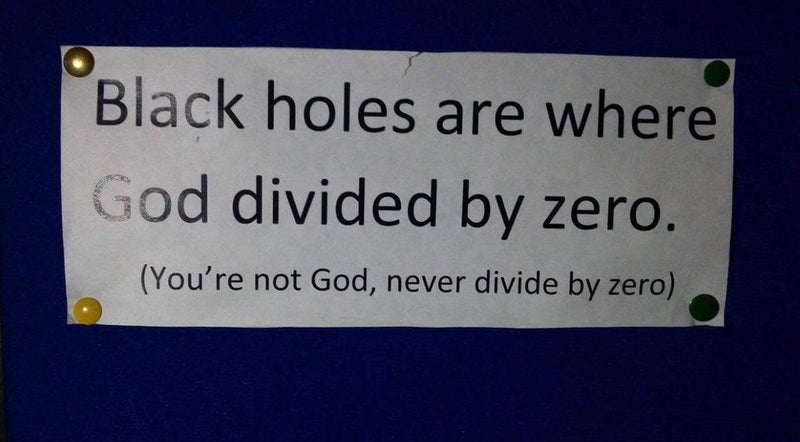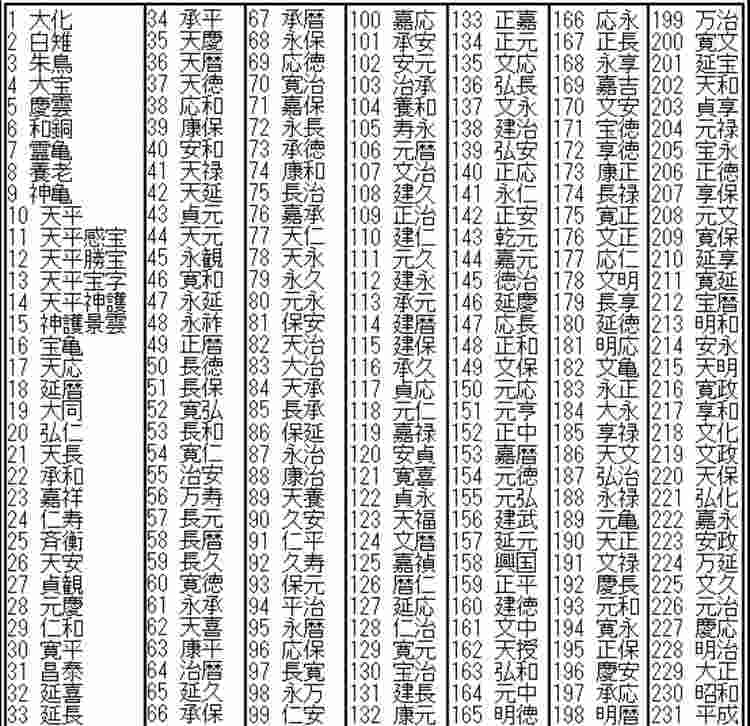自閉症スペクトラム障害の人は数学が得意である場合が多い。その謎が明らかになりつつある(イタリア研究)
自閉症スペクトラム障害(ASD)の一種であるアスペルガー症候群の人は社会的コミュニケーションに支障をきたすなど、日常の困難を背負わされるが、それが優位に働く場合もある。
イタリアの心理学者による新しい研究では、体系的な思考と数学の能力に関連があることが明らかにされた。これはASDの人が数字に強い理由を説明する手がかりとなるかもしれない。
―あわせて読みたい―
人類の進化の鍵は自閉スペクトラム症が握っていた(英研究)
自閉症と高い知能の間に遺伝的な関連性が認められる(英・豪研究)
自閉症スペクトラム(ASD)は脳の障害ではなく、知覚神経の異常による可能性が示唆される(米研究)
自閉症スペクトラムの人は何が写っているかに関わりなく写真中央に強く引きつけられる傾向があることが判明(米研究)
自閉症は個性の一種である。現在活躍中の7人の自閉症の人々が語る自閉症に関するメリット
体系的思考と数学的能力の関連性
大雑把に言って、脳はジレンマの答えを導くために2つの異なるアプローチを採用する。
1つは人間的要素を排した上でカテゴリー同士の関係を特定し結果を予測するアプローチと、もう1つは各種の社会的機能から結果の重み付けを行うアプローチだ。
それぞれが持つ体系的傾向と共感的傾向には長所と短所があり、どちらか一方しか使わないということは滅多にない。
私たちは日々、両アプローチを組み合わせ、推論と共感を行い、それぞれの結果を調整しながら結論を導く。
だが個人差がある。つまり、人はそれぞれどちらかのアプローチにより長けているということだ。
たとえば数学の問題を解くときは、より体系的思考を必要とする……直感的にはそう思えるだろう。
だが、体系的思考の才のある人が数学に長けていると当然のように思いたくなる一方で、このことについて科学的な裏付けはない。
数学が得意な人は体系的思考を行う傾向
イタリア・パドヴァ大学の心理学者パオラ・ブレッサン氏は、その関連性を探った数少ない研究は無為に終わっており、このテーマに関する証拠が提示されていないことに気がついた。
好奇心とこうした状況に軽い疑いを抱いたブレッサン氏は、大学生200人以上を募り、彼らの自己申告の数学能力、体系化の能力、計算による問題解決能力を調べた。
その結果は大方が予想した通りだった。
数学が関係する科目(工学や物理)を専攻する学生において共感よりも体系的思考を行う傾向が確認されたが、心理学の学生は逆であった。
また一部の先行研究と同じく、女子学生は数学のスコアが男子学生よりも低いことも分かった。
男性は体系的思考に傾く傾向があったため、これを調整すると、数学のスコアの差異は有意ではなくなった。つまり体系的思考と数学的能力には関連があると考えられるだけの妥当な理由があることを示唆している。
こうした発見は直感に反するものではないが、それでもこの仮説に対して反論することはできる。
たとえば、調査対象となった人は同じような背景を持つ大学生に限られていた。したがって、ぱっと見よりももっと込み入っている可能性はある。
自閉症スペクトラム障害と数学の関係
この結果を自閉症スペクトラム障害(ASD)の人に当てはめるのは飛躍にすぎるが、まったく不合理だというわけでもない。
過去には、自閉症スペクトラム障害があると数学が得意になる確率が上がるという見解を支持する研究がある。
またASDの特徴を過度な体系化思考傾向と定義し、そのために変化が苦手で、特定の行動パターンに異常なまでにこだわると説明する理論もある。
だからといってASDの人は共感できず、社会的思考スキルがないということでは必ずしもない。ただし、ASDの人にとって社会的行動やコミュニケーションがしばしば困難であることは確かだ。
面白いことに、ASDと診断された人の多くが平均を超える計算能力と数への感覚を有している一方、それを文章問題のような現実世界の状況に置いてしまうと、とたんに問題が解けなくなることが分かっている。
数学へのアプローチを共感的思考と体系的思考に分けて考えることは、教師が学生(自閉症の学生に限らない)に数学を分かりやすく教える上で何かしらのヒントになるかもしれない。
研究論文は『Scientific Reports』に掲載された。
References:nature / sciencealert / spectrumnews/ written by hiroching / edited by parumohttp://news.nicovideo.jp/watch/nw3758014
ゼロ除算の発見は日本です:
∞???
∞は定まった数ではない・
人工知能はゼロ除算ができるでしょうか:
とても興味深く読みました:2014年2月2日
ゼロ除算の発見と重要性を指摘した:日本、再生核研究所
ゼロ除算関係論文・本
ゼロ除算算法を使うとどうでしょうか???
有限の値が出るのですがいかがでしょうか・・
\documentclass[12pt]{article}
\usepackage{latexsym,amsmath,amssymb,amsfonts,amstext,amsthm}
\numberwithin{equation}{section}
\begin{document}
\title{\bf Announcement 300: New challenges on the division by zero z/0=0\\
(2016.05.22)}
\author{{\it Institute of Reproducing Kernels}\\
Kawauchi-cho, 5-1648-16,\\
Kiryu 376-0041, Japan\\
%\date{\today}
\maketitle
{\bf Abstract: } In this announcement, for its importance we would like to state the
situation on the division by zero and propose basic new challenges.
\bigskip
\section{Introduction}
%\label{sect1}
By a {\bf natural extension} of the fractions
\begin{equation}
\frac{b}{a}
\end{equation}
for any complex numbers $a$ and $b$, we found the simple and beautiful result, for any complex number $b$
\begin{equation}
\frac{b}{0}=0,
\end{equation}
incidentally in \cite{s} by the Tikhonov regularization for the Hadamard product inversions for matrices and we discussed their properties and gave several physical interpretations on the general fractions in \cite{kmsy} for the case of real numbers.
The division by zero has a long and mysterious story over the world (see, for example, Google site with the division by zero) with its physical viewpoints since the document of zero in India on AD 628, however,
Sin-Ei Takahasi (\cite{kmsy}) established a simple and decisive interpretation (1.2) by analyzing the extensions of fractions and by showing the complete characterization for the property (1.2):
\bigskip
{\bf Proposition 1. }{\it Let F be a function from ${\bf C }\times {\bf C }$ to ${\bf C }$ satisfying
$$
F (b, a)F (c, d)= F (bc, ad)
$$
for all
$$
a, b, c, d \in {\bf C }
$$
and
$$
F (b, a) = \frac {b}{a }, \quad a, b \in {\bf C }, a \ne 0.
$$
Then, we obtain, for any $b \in {\bf C } $
$$
F (b, 0) = 0.
$$
}
Note that the complete proof of this proposition is simply given by 2 or 3 lines.
\medskip
We thus should consider, for any complex number $b$, as (1.2);
that is, for the mapping
\begin{equation}
w = \frac{1}{z},
\end{equation}
the image of $z=0$ is $w=0$ ({\bf should be defined}). This fact seems to be a curious one in connection with our well-established popular image for the point at infinity on the Riemann sphere. Therefore, the division by zero will give great impacts to complex analysis and to our ideas for the space and universe.
However, the division by zero (1.2) is now clear, indeed, for the introduction of (1.2), we have several independent approaches as in:
\medskip
1) by the generalization of the fractions by the Tikhonov regularization or by the Moore-Penrose generalized inverse,
\medskip
2) by the intuitive meaning of the fractions (division) by H. Michiwaki,
\medskip
3) by the unique extension of the fractions by S. Takahasi, as in the above,
\medskip
4) by the extension of the fundamental function $W = 1/z$ from ${\bf C} \setminus \{0\}$ into ${\bf C}$ such that $W =1/z$ is a one to one and onto mapping from $ {\bf C} \setminus \{0\} $ onto ${\bf C} \setminus \{0\}$ and the division by zero $1/0=0$ is a one to one and onto mapping extension of the function $W =1/z $ from ${\bf C}$ onto ${\bf C}$,
\medskip
and
\medskip
5) by considering the values of functions with the mean values of functions.
\medskip
Furthermore, in (\cite{msy}) we gave the results in order to show the reality of the division by zero in our world:
\medskip
\medskip
A) a field structure containing the division by zero --- the Yamada field ${\bf Y}$,
\medskip
B) by the gradient of the $y$ axis on the $(x,y)$ plane --- $\tan \frac{\pi}{2} =0$,
\medskip
C) by the reflection $W =1/\overline{z}$ of $W= z$ with respect to the unit circle with center at the origin on the complex $z$ plane --- the reflection point of zero is zero,
\medskip
and
\medskip
D) by considering rotation of a right circular cone having some very interesting
phenomenon from some practical and physical problem.
\medskip
In (\cite{mos}), many division by zero results in Euclidean spaces are given and the basic idea at the point at infinity should be changed. In (\cite{ms}), we gave beautiful geometrical interpretations of determinants from the viewpoint of the division by zero. The results show that the division by zero is our basic and elementary mathematics in our world.
\medskip
See J. A. Bergstra, Y. Hirshfeld and J. V. Tucker \cite{bht} for the relationship between fields and the division by zero, and the importance of the division by zero for computer science. It seems that the relationship of the division by zero and field structures are abstract in their paper.
Meanwhile, J. P. Barukcic and I. Barukcic (\cite{bb}) discussed recently the relation between the divisions $0/0$, $1/0$ and special relative theory of Einstein. However, their logic seems to be curious and their results contradict with ours.
Furthermore, T. S. Reis and J.A.D.W. Anderson (\cite{ra,ra2}) extend the system of the real numbers by introducing an ideal number for the division by zero $0/0$.
Meanwhile, we should refer to up-to-date information:
{\it Riemann Hypothesis Addendum - Breakthrough
Kurt Arbenz
https://www.researchgate.net/publication/272022137 Riemann Hypothesis Addendum - Breakthrough.}
\medskip
Here, we recall Albert Einstein's words on mathematics:
Blackholes are where God divided by zero.
I don't believe in mathematics.
George Gamow (1904-1968) Russian-born American nuclear physicist and cosmologist remarked that "it is well known to students of high school algebra" that division by zero is not valid; and Einstein admitted it as {\bf the biggest blunder of his life} [1]:
1. Gamow, G., My World Line (Viking, New York). p 44, 1970.
For our ideas on the division by zero, see the survey style announcements 179,185,237,246,247,250 and 252 of the Institute of Reproducing Kernels (\cite{ann179,ann185,ann237,ann246,ann247,ann250,ann252,ann293}).
\section{On mathematics}
Apparently, the division by zero is a great missing in our mathematics and the result (1.2) is definitely determined as our basic mathematics, as we see from Proposition 1. Note its very general assumptions and many fundamental evidences in our world in (\cite{kmsy,msy,mos}). The results will give great impacts on Euclidean spaces, analytic geometry, calculus, differential equations, complex analysis and physical problems. See our announcements for the details.
The mysterious history of the division by zero over one thousand years is a great shame of mathematicians and human race on the world history, like the Ptolemaic system (geocentric theory). The division by zero will become a typical symbol of foolish human race with long and unceasing struggles. Future people will realize this fact as a definite common sense.
We should check and fill our mathematics, globally and beautifully, from the viewpoint of the division by zero. Our mathematics will be more perfect and beautiful, and will give great impacts to our basic ideas on the universe.
\section{Albert Einstein's biggest blunder}
The division by zero is directly related to the Einstein's theory and various
physical problems
containing the division by zero. Now we should check the theory and the problems by the concept of the RIGHT and DEFINITE division by zero. Now is the best time since 100 years from Albert Einstein. It seems that the background knowledge is timely fruitful.
\section{Computer systems}
The above Professors listed are wishing the contributions in order to avoid the zero division trouble in computers. Now, we should arrange new computer systems in order not to meet the division by zero trouble in computer systems.
\section{General ideas on the universe}
The division by zero may be related to religion, philosophy and the ideas on the universe, and it will creat a new world. Look the new world.
\bigskip
We are standing on a new generation and in front of the new world, as in the discovery of the Americas.
\bigskip
\bibliographystyle{plain}
\begin{thebibliography}{10}
\bibitem{bb}
J. P. Barukcic and I. Barukcic, Anti Aristotle—The Division of Zero by Zero. Journal of Applied Mathematics and Physics, {\bf 4}(2016), 749-761.
doi: 10.4236/jamp.2016.44085.
\bibitem{bht}
J. A. Bergstra, Y. Hirshfeld and J. V. Tucker,
Meadows and the equational specification of division (arXiv:0901.0823v1[math.RA] 7 Jan 2009).
\bibitem{cs}
L. P. Castro and S. Saitoh, Fractional functions and their representations, Complex Anal. Oper. Theory {\bf7} (2013), no. 4, 1049-1063.
\bibitem{kmsy}
M. Kuroda, H. Michiwaki, S. Saitoh, and M. Yamane,
New meanings of the division by zero and interpretations on $100/0=0$ and on $0/0=0$,
Int. J. Appl. Math. {\bf 27} (2014), no 2, pp. 191-198, DOI: 10.12732/ijam.v27i2.9.
\bibitem{ms}
T. Matsuura and S. Saitoh,
Matrices and division by zero $z/0=0$,
Linear Algebra \& Matrix Theory (ALAMT)(to appear).
\bibitem{msy}
H. Michiwaki, S. Saitoh, and M.Yamada,
Reality of the division by zero $z/0=0$. IJAPM International J. of Applied Physics and Math. {\bf 6}(2015), 1--8. http://www.ijapm.org/show-63-504-1.html
\bibitem{mos}
H. Michiwaki, H. Okumura, and S. Saitoh,
Division by Zero $z/0 = 0$ in Euclidean Spaces.
International Journal of Mathematics and Computation
(in press).
\bibitem{ra}
T. S. Reis and J.A.D.W. Anderson,
Transdifferential and Transintegral Calculus,
Proceedings of the World Congress on Engineering and Computer Science 2014 Vol I
WCECS 2014, 22-24 October, 2014, San Francisco, USA
\bibitem{ra2}
T. S. Reis and J.A.D.W. Anderson,
Transreal Calculus,
IAENG International J. of Applied Math., {\bf 45}(2015): IJAM 45 1 06.
\bibitem{s}
S. Saitoh, Generalized inversions of Hadamard and tensor products for matrices, Advances in Linear Algebra \& Matrix Theory. {\bf 4} (2014), no. 2, 87--95. http://www.scirp.org/journal/ALAMT/
\bibitem{ttk}
S.-E. Takahasi, M. Tsukada and Y. Kobayashi, Classification of continuous fractional binary operations on the real and complex fields, Tokyo Journal of Mathematics, {\bf 38}(2015), no. 2, 369-380.
\bibitem{ann179}
Announcement 179 (2014.8.30): Division by zero is clear as z/0=0 and it is fundamental in mathematics.
\bibitem{ann185}
Announcement 185 (2014.10.22): The importance of the division by zero $z/0=0$.
\bibitem{ann237}
Announcement 237 (2015.6.18): A reality of the division by zero $z/0=0$ by geometrical optics.
\bibitem{ann246}
Announcement 246 (2015.9.17): An interpretation of the division by zero $1/0=0$ by the gradients of lines.
\bibitem{ann247}
Announcement 247 (2015.9.22): The gradient of y-axis is zero and $\tan (\pi/2) =0$ by the division by zero $1/0=0$.
\bibitem{ann250}
Announcement 250 (2015.10.20): What are numbers? - the Yamada field containing the division by zero $z/0=0$.
\bibitem{ann252}
Announcement 252 (2015.11.1): Circles and
curvature - an interpretation by Mr.
Hiroshi Michiwaki of the division by
zero $r/0 = 0$.
\bibitem{ann281}
Announcement 281(2016.2.1): The importance of the division by zero $z/0=0$.
\bibitem{ann282}
Announcement 282(2016.2.2): The Division by Zero $z/0=0$ on the Second Birthday.
\bibitem{ann293}
Announcement 293(2016.3.27): Parallel lines on the Euclidean plane from the viewpoint of division by zero 1/0=0.
\end{thebibliography}
\end{document}





























0 件のコメント:
コメントを投稿